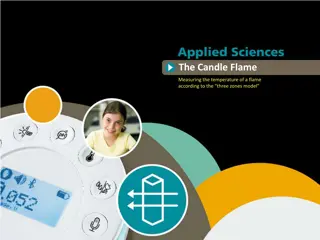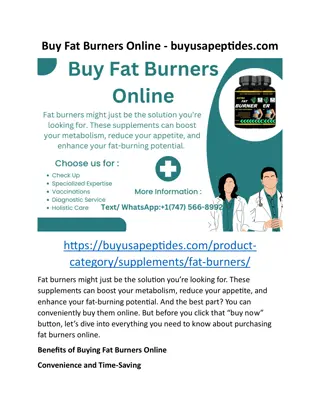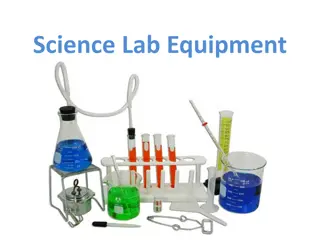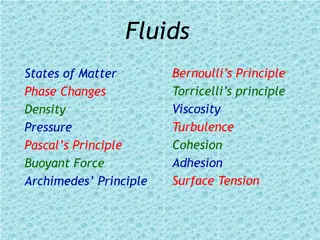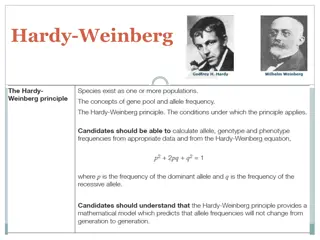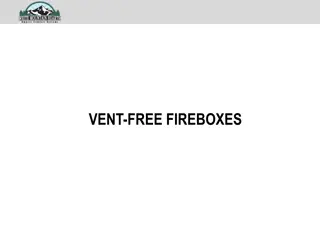Understanding Bunsen Burners: Parts, Working Principle, and Flames
Explore the world of Bunsen burners in this chapter, learning about their parts, how to use them, heating substances, and determining the hotter flame. Discover the history behind Robert Bunsen's invention and see the difference between luminous and non-luminous flames with clear diagrams and step-by-step instructions.
Download Presentation

Please find below an Image/Link to download the presentation.
The content on the website is provided AS IS for your information and personal use only. It may not be sold, licensed, or shared on other websites without obtaining consent from the author. Download presentation by click this link. If you encounter any issues during the download, it is possible that the publisher has removed the file from their server.
E N D
Presentation Transcript
In this chapter, you will learn: What is a Bunsen burner. How to use the Bunsen burner. Heating substances with a Bunsen burner. Find out which flame is hotter.
A Bunsen Burner The first Bunsen burner Outer core Inner core Burner tube Stopcock Collar
Robert Bunsen We heat things with a Bunsen burner in the laboratory. Robert Bunsen, a German chemist, invented this apparatus in 1855.
What are the parts of a Bunsen burner? Label the diagram using these words. air hole chimney collar tubing gas tap chimney gas tap tubing collar air hole
How do we use a Bunsen burner? 1.Join the burner to a gas tap.
How do we use a Bunsen burner? 2.Close the air hole.
How do we use a Bunsen burner? 3.Light a match and hold it over the chimney. Turn on the gas tap.
The Bunsen flame I What will be the colour of the flame when the air hole is closed? This is a luminous flame.
The Bunsen flame II Open the air hole slowly. What will be the colour of the flame when the air hole is opened? This is a non-luminous flame.
Check point Use suitable words to fill in the blanks. The non-luminous flame is (a) in colour. The luminous flame is (b) in colour. The (c) flame is easier to see. (a) yellow (b) blue (c) luminous
Which kind of flame is hotter? Flame II Flame I with air hole OPENED blue in colour non-luminous with air hole CLOSED yellow in colour luminous ?
How to know which flame is hotter? To contact the flame with your hand? To measure the temperature by a thermometer? X X To compare the time taken to make the water boiled ?
How to heat an object? (1) The apparatus used in the procedure of heating: What are these? Wire gauze Bunsen Burner Beaker Tripod
How to heat an object? (2) 3 Place a wire gauze onto the tripod 2. Put a tripod over the Bunsen Burner 1 .Prepare a Bunsen Burner
How to heat an object? (3) 5. Then add water into the beaker 4. Put a beaker onto the wire gauze
Measuring the time taken to boil a certain amount of water Fill a beaker with 50 cm3 of tap water Set up the apparatus as shown in the diagram Heat the water with a flame of Bunsen Burner until it boils Use stop-watch to find out the time taken Stop-watch
Experiments to compare which flame is hotter Experiment 1 with the air hole of Bunsen Burner CLOSED yellow flame Experiment 2 with the air hole of Bunsen Burner OPENED blue flame
Experiment 1 (a) Light a Bunsen Burner with the air hole closed Light a match and hold it over the chimney. Turn on the gas tap
Experiment 1 (b) Put a beaker of water with 50 cm3 of tap water onto the tripod Heat the water until it boil Record the time needed by using Stop-watch
Experiment 2 (a) Light a Bunsen Burner with the air hole opened Light a match and hold it over the chimney. Turn on the gas tap
Experiment 2 (b) Put a beaker of water with 50 cm3 of tap water onto the tripod Heat the water until it boil Record the time needed by using stop- watch
Result of the experiments 1. Which flame make the water boiled first? Yellow or blue flame? Ans: Blue flame 2. Which flame is hotter? Ans: Blue flame
Conclusion So, Blue flame is better for heating
Practical exercises Do you know how to use Bunsen Burner? Do you know how to boil water? Do the experiment yourself NOW!





